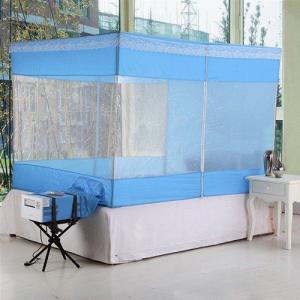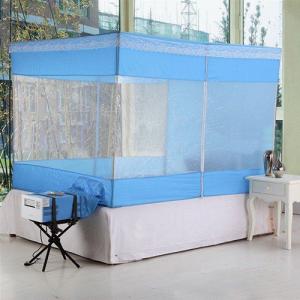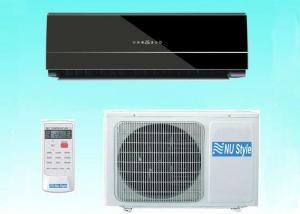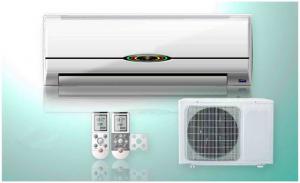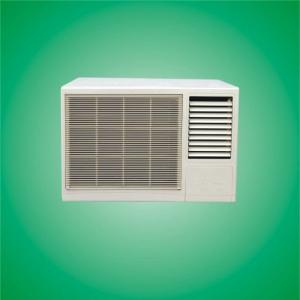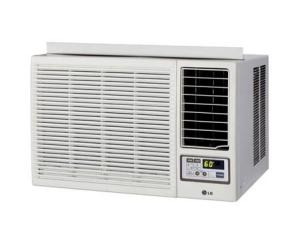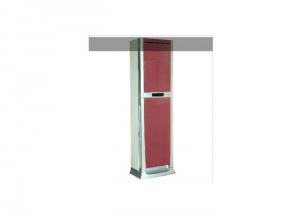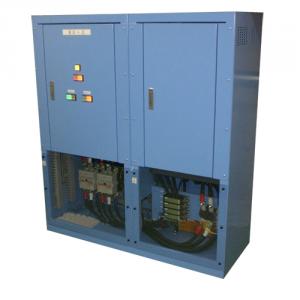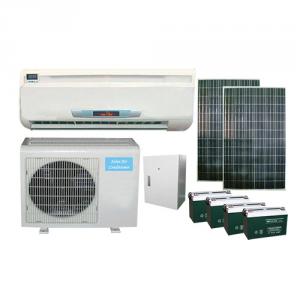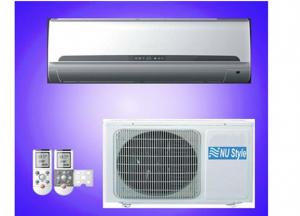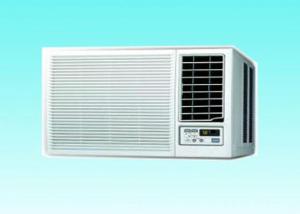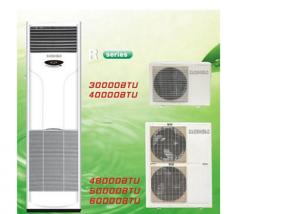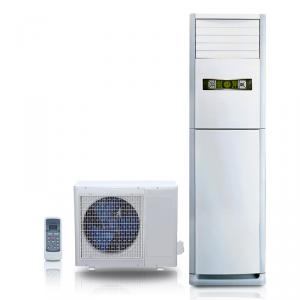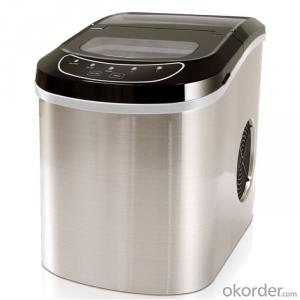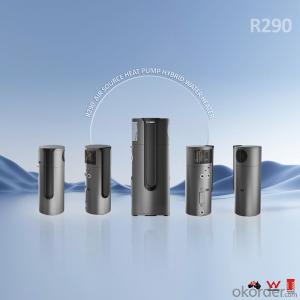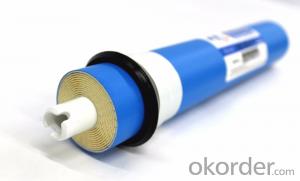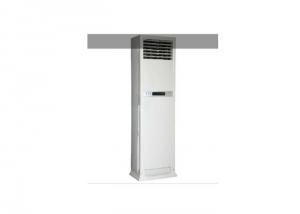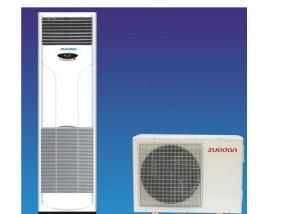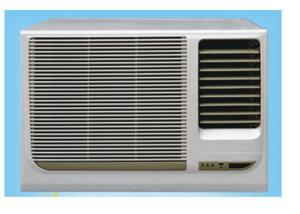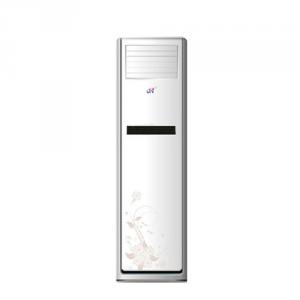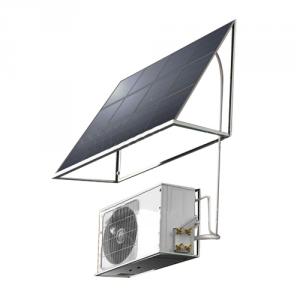Mosquito Tent Air Conditioner
- Loading Port:
- Shunde
- Payment Terms:
- T/T
- Min Order Qty:
- 10 Sets set
- Supply Capability:
- 1000 Sets per Month set/month
OKorder Service Pledge
OKorder Financial Service
You Might Also Like
It is suitable to be used in a tent cooling.
low cost: small compressor and evaporator system. The compressor use R134a to provide cool or hot air. As the tent space is very small, even such small power compressor can cool the temperature down within 10 minutes.
energy-saving. The power is only 100W ~ 250W for one bed. Traditional bed room air conditioner costs 10 times more electricity.
low noise: the tent keeps a quiet environment.
low price: the price is only1/3 than traditional air conditioner. It is as cheap as a fan.
light weight , conveninet to carry and use: no need complicated installation. No need seal the window and door. Just set up the tent and plug in socket.
portable: after packed, the gross weight is only 13kg. You can take it away easily to anywhere.
Input power: 260W
Cooling capacity: 400W
Power supply: 230v-50Hz
Application: tent cooling, dehumidification, personal office
Dimension ( D*W*H ): 45.2 * 29.0 * 21mm
Net weight: 13kg
Refrigerant: R134a
Material: full metal sheet
Application room: 2*2*2m
FAQ
Q1:Why is it important to use home air conditioner filters?
A:Without them you can clog up vital parts of the heating or cooling components that can be difficult to clean out and can cause severe damage that will be much more expensive to repair than the inconvenience of replacing a filter once a month.
Q2:What is VRF Air Conditioning System?
A:VRF air-conditioning systems owe their growing popularity to their ability to meet a wide range of requirements.
- Q:The working principle of air pressure switch?
- Jetta air conditioning 3 thread working principle of the pressure switch: (1) three lines, a 12 v. (2) the other two root is a high voltage switch, one is the atmospheric pressure switch, pressure is too high will disconnect the compressor electromagnetic clutch. The three lines of air conditioning plug connected to the plug: (1) wire (mostly red or brown) plug or socket on L interface, (2) the zero line (in blue or green) on N interface, (3) the ground wire (double color) on E interface.
- Q:How do I install a smart thermostat for my air conditioner?
- Installing a smart thermostat for your air conditioner is a relatively simple process. Here are the steps you should follow: 1. Check compatibility: Before purchasing a smart thermostat, make sure it is compatible with your air conditioner system. Check the specifications and requirements provided by the manufacturer to ensure a proper fit. 2. Turn off power: Start by turning off the power to your air conditioner system. This can usually be done by switching off the circuit breaker that controls the AC unit. 3. Remove the old thermostat: Remove the cover of your existing thermostat to expose the wires connected to it. Take a picture or make note of the wire connections for reference later. Carefully disconnect the wires, making sure they don't fall back into the wall. 4. Install the mounting plate: Attach the mounting plate that came with your smart thermostat to the wall using the provided screws. Ensure that it is level and securely fastened. 5. Connect the wires: Connect the wires from your air conditioner system to the corresponding terminals on the smart thermostat. Follow the labeling provided by the manufacturer to ensure proper connections. Use a screwdriver to secure the wires in place. 6. Attach the smart thermostat: Carefully slide the smart thermostat onto the mounting plate, making sure it is firmly attached. Some models may require twisting or snapping into place. 7. Turn on power: Once the smart thermostat is securely installed, you can turn the power back on by switching on the circuit breaker. 8. Set up the smart thermostat: Follow the instructions provided by the manufacturer to set up your smart thermostat. This usually involves connecting it to your home's Wi-Fi network and configuring the settings using a smartphone app or the thermostat's interface. 9. Customize settings: Take some time to customize the settings on your smart thermostat according to your preferences. This may include setting temperature schedules, creating zones, or enabling energy-saving features. 10. Test and monitor: Finally, test your smart thermostat by adjusting the temperature and ensuring that your air conditioner responds accordingly. Monitor its performance and make any necessary adjustments to optimize comfort and energy efficiency. Remember to consult the installation guide provided by the manufacturer for specific instructions tailored to your smart thermostat model. If you are uncomfortable with any step of the installation process, it is best to seek professional assistance to ensure a safe and proper installation.
- Q:Are there any government regulations regarding the energy efficiency of air conditioners?
- Air conditioners are subject to government regulations that focus on energy efficiency. Many countries have implemented various measures and standards to promote energy efficiency and minimize the environmental impact of air conditioning systems. These regulations primarily aim to establish minimum energy performance standards (MEPS) that air conditioners must meet in order to be sold in the market. In the United States, for example, the Department of Energy (DOE) sets energy efficiency standards for residential and commercial air conditioners under the Energy Policy and Conservation Act (EPCA). These standards are regularly updated to increase the energy efficiency requirements, ensuring that newer air conditioner models are more energy-efficient than previous ones. Likewise, the European Union (EU) has introduced the Energy Efficiency Directive, which includes regulations for air conditioning systems. The EU Energy Label provides consumers with information on the energy efficiency of air conditioners, enabling them to make informed choices when purchasing these appliances. Additionally, countries like Japan, Australia, Canada, and others have also put in place regulations and standards to enhance the energy efficiency of air conditioners. These regulations often involve labeling requirements, energy efficiency testing procedures, and performance standards that manufacturers must meet before bringing their products to the market. Government regulations regarding the energy efficiency of air conditioners play a crucial role in reducing electricity consumption, curbing greenhouse gas emissions, and promoting sustainable energy practices. By encouraging the use of more efficient air conditioning systems, governments aim to conserve energy, lower utility bills, and minimize the environmental impact of cooling technologies.
- Q:How do I choose the right size air conditioner for my home?
- Choosing the right size air conditioner for your home is important to ensure efficient cooling and optimal comfort. Here are some steps to help you make the right choice: 1. Calculate the cooling load: Start by determining the cooling load of your home, which is the amount of cooling needed to maintain a comfortable temperature. Consider factors such as the size of your home, the number of rooms, insulation, ceiling height, and the local climate. You can use online calculators or consult with an HVAC professional to get an accurate estimate. 2. Understand BTU ratings: Air conditioners are rated in British Thermal Units (BTUs), which measure their cooling capacity. A higher BTU rating indicates a more powerful unit, but it's crucial to match the BTU rating to your cooling load. Oversized units will cool the space too quickly, resulting in frequent on/off cycles and reduced energy efficiency, while undersized units won't provide adequate cooling. 3. Consider energy efficiency: Look for air conditioners with high Energy Efficiency Ratio (EER) or Seasonal Energy Efficiency Ratio (SEER) ratings. These ratings indicate the energy efficiency of the unit. Opting for a more energy-efficient model will not only save you money on utility bills but also reduce environmental impact. 4. Take into account the room layout: The layout of your home also affects the cooling distribution. If you have an open floor plan, a single air conditioner may be sufficient. However, if you have multiple rooms or separate floors, you might need multiple units or a zoned system to ensure even cooling throughout. 5. Seek professional advice: It's always recommended to consult with an HVAC professional before making a final decision. They can accurately assess your home's cooling needs, consider any unique factors, and suggest the appropriate size and type of air conditioner. By following these steps and seeking expert guidance, you'll be able to choose the right size air conditioner for your home, ensuring optimal cooling performance and energy efficiency.
- Q:Household central air conditioning and hanging air conditioning quality comparison?
- A class. For also decorate the house, using household central air conditioning system with fission machine on the grade difference is self-evident, originally the main customers of household central air conditioning system is in high-grade user, class differences are a lot of people who don't understand the air conditioning when decorate consider installation of an important factor, the installation of the household central air conditioning system can be concealed in all kinds of interior decoration style, at the end of the form and the form of tuyere, material can be flexible choice, for interior decoration design for high-end customers have had a lot of kung fu, the air conditioning system should be completely hidden they can accept and to seriously consider a scheme.
- Q:Can I use my air conditioner as a heater during the winter?
- No, you cannot use your air conditioner as a heater during the winter. Air conditioners are specifically designed to cool the air by removing heat and humidity from the room. They work by taking warm air from inside the room, cooling it, and then releasing it back into the room. This process is not suitable for heating during the winter months when you need to increase the temperature. If you want to heat your room during the winter, you will need a separate heating system, such as a furnace, boiler, electric heater, or a heat pump. These devices are designed to produce and distribute warm air or heat your space in an efficient and effective manner. It is essential to use the appropriate heating equipment to ensure the safety, comfort, and energy efficiency of your home during the colder months.
- Q:Which master know why household air conditioning Wells, drilling Wells have what effect?
- of course, it is definitely not like some people don't understand the principle that can increase the humidity (how much water flow in, how much water will be out, didn't reduce.) it will reduce indoor humidity. All of these and conventional air conditioning. A pump is available for three hanging air conditioning or 1-2 sets cabinet air conditioning used at the same time. It is more save electricity! (3 room 4-7 hours once electricity!!) Natural air conditioning geothermal air conditioning only water pump and air conditioning fan consumes little power, can effect comparing 1:25 above is one of the most energy saving air conditioning. Shallow groundwater is close to the local average atmospheric temperature throughout the year, with warm in winter and cool in summer seasons constant temperature characteristics, almost not influenced by air temperature
- Q:Home air conditioning is generally how to adjust temperature?
- Air conditioning indoor machine mesh inside a thermistor temperature sensor, to detect the temperature. Take to detect the temperature of the set temperature to compare with you.
- Q:Household air-conditioning vibration is big, very loud sound, how be to return a responsibility?
- Tone sound is the sound of air conditioning compressor, can feel the noise near the air conditioning compressor. 1, this kind of sound is usually due to the refrigerant composition with air and water. 2, if the situation remains after add refrigerant, and sound position near the compressor, the compressor internal mechanical structure at greater risk of damage; 3, if after a period of time sound has a relapse, and the internal controls, are at greater risk of dry bottles of efficiency to reduce.
- Q:Air conditioning is divided into several types
- If is the central air conditioning, it is only two, one, the wind system. Second, the water system
1. Manufacturer Overview |
|
|---|---|
| Location | |
| Year Established | |
| Annual Output Value | |
| Main Markets | |
| Company Certifications | |
2. Manufacturer Certificates |
|
|---|---|
| a) Certification Name | |
| Range | |
| Reference | |
| Validity Period | |
3. Manufacturer Capability |
|
|---|---|
| a)Trade Capacity | |
| Nearest Port | |
| Export Percentage | |
| No.of Employees in Trade Department | |
| Language Spoken: | |
| b)Factory Information | |
| Factory Size: | |
| No. of Production Lines | |
| Contract Manufacturing | |
| Product Price Range | |
Send your message to us
Mosquito Tent Air Conditioner
- Loading Port:
- Shunde
- Payment Terms:
- T/T
- Min Order Qty:
- 10 Sets set
- Supply Capability:
- 1000 Sets per Month set/month
OKorder Service Pledge
OKorder Financial Service
Similar products
New products
Hot products
Hot Searches
Related keywords
